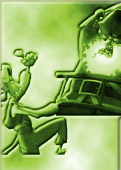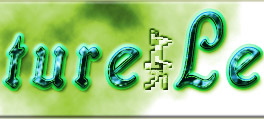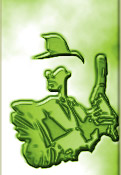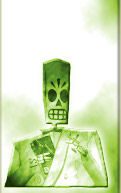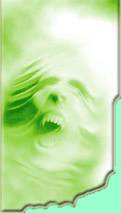
|
The legendary Brazilian Formula 1 driver Ayrton Senna, nicknamed The Wizard, was the favorite of many children of the 80s and early 90s of the 20th century. In early 1994, a few months before his tragic death while participating in the San Marino Grand Prix, he gave permission to use his image as a prototype to create a cartoon boy named Senninha. With this character in the "leading role" it was planned to produce a variety of educational and entertainment products - and the Senna Fund would spend the proceeds from sales on children's charity. As a result, it happened, and the activity under the Senninha brand acquired huge proportions in the mid-1990s: short cartoons saw the light of day, comics and several computer games for a very young audience, one of which is presented on this page. If you believe the sources, then the creators in this way tried to somehow alleviate the "pain of the generation", who lost their idol (although nothing prevents us from assuming that they just made money ...). In spite of the presence of the corresponding word in the title, there will not be any rally. The protagonist is really a “racer boy” who, after starting the game, while in the garage, gets into his makeshift car, after which a display with several world landmarks appears on the “first-person view” screen. In the center of it is a kind of Taj Mahal - and we, wherever we click, first go to conditional India. Upon arrival, it is necessary, formally "controlling" the Sennini figure, presented in perspective "from the side", to pass literally several screens; To do this, just move the cursor to the right side of the space and left-click. In each of the locations there is a certain "inhabitant", by clicking on it performs any ". In the left - larger - part of the screen, there is a “grid”: above its top row are values from 1 to 10 (in a row), and along the left column, from 1 to 91 with an interval of 10 units (that is, 11, 21 and etc). The rest of the “content” is represented by dots and is calculated independently by logic: if, for example, the corresponding character is at the intersection of a column that goes below the number 8 and a line that goes from the number 21, then it is obvious that its value is 28. Under this “table” there is a slate board on which the simplest arithmetic example is written - by default, addition; it is necessary to calculate the amount, find the corresponding value on the “grid” above and left-click on it. After that, a new (similar in type) task will appear on the board. Then everything will be the same - and in a similar way the outline of a certain image will gradually emerge on the "field". As soon as we finish the work, it will turn into some kind of colored object (inanimate object, animal, person, and so on) and fit into one of eight cells on the right side of the screen. Below them are four icons - with the image of the Taj Mahal, cobra, yoga and genie - clicking on each of them changes the type of arithmetic tasks given to us; They are responsible respectively for addition (as already mentioned, it is proposed to us by default), subtraction, multiplication and division. Moreover, in the process of "solving the puzzle" you can switch between these "modes" as many times as you like, and if you can’t solve a specific example, you can request another one by clicking on the " Reinicira ". Clicking on the icon in the form of a racing helmet (available while traveling around the conditional city, which was mentioned earlier) displays some information both about arithmetic and about India (naturally, in Portuguese). If you" solve "all eight figures, a genie will appear and say something, after which we will return to the garage - while trying to go on a trip again will again lead to the appearance in the same India: apparently, in order to be in other lands (judging by the attractions shown, it is Egypt, Greece and Rome), it is necessary t to somehow achieve the appearance of the finished image with the help of the four arithmetic operations. The graphics are cartoony and pretty nice; another thing is that it is very small, since the basis of the game process is mathematical calculations. In principle, "connecting the dots", of course, is a very interesting occupation, but the pictures here are usually large in size, and the tasks for the same division can (of course, if there is no calculator at hand) cause some hitch even in adults; in other words, it has to be assumed that for most children tackling such monotonous and lengthy tasks will be somewhat bored and tired. |

